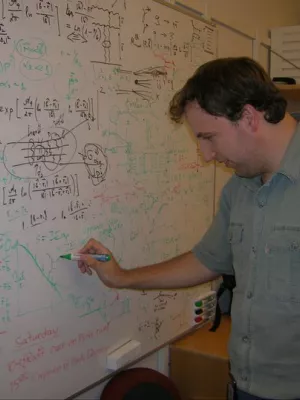
Roman Pasechnik
Senior lecturer

Composite scalar dark matter from vector-like SU (2) confinement
Author
Summary, in English
A toy-model with SU(2)TC dynamics confined at high scales ΛTC > 100GeV enables to construct Dirac UV completion from the original chiral multiplets predicting a vector-like nature of their weak interactions consistent with electroweak precision tests. In this work, we investigate a potential of the lightest scalar baryon-like (T-baryon) state B0 = UD with mass mB ≥ 1TeV predicted by the simplest two-flavor vector-like confinement model as a dark matter (DM) candidate. We show that two different scenarios with the T-baryon relic abundance formation before and after the electroweak (EW) phase transition epoch lead to symmetric (or mixed) and asymmetric DM, respectively. Such a DM candidate evades existing direct DM detection constraints since its vector coupling to Z boson absents at tree level, while one-loop gauge boson mediated contribution is shown to be vanishingly small close to the threshold. The dominating spin-independent (SI) T-baryon-nucleon scattering goes via tree-level Higgs boson exchange in the t-channel. The corresponding bound on the effective T-baryon-Higgs coupling has been extracted from the recent LUX data and turns out to be consistent with naive expectations from the light technipion case mπ <ΛTC. The latter provides the most stringent phenomenological constraint on strongly-coupled SU(2)TC dynamics so far. Future prospects for direct and indirect scalar T-baryon DM searches in astrophysics as well as in collider measurements have been discussed.
Department/s
- Department of Astronomy and Theoretical Physics - Has been reorganised
Publishing year
2016-03-20
Language
English
Publication/Series
International Journal of Modern Physics A
Volume
31
Issue
8
Document type
Journal article
Publisher
World Scientific Publishing
Topic
- Subatomic Physics
Keywords
- dark matter annihilation
- Dark matter candidates
- dark matter direct detection
- low-energy effective field theories
- technibaryon
- technicolor
Status
Published
ISBN/ISSN/Other
- ISSN: 0217-751X

